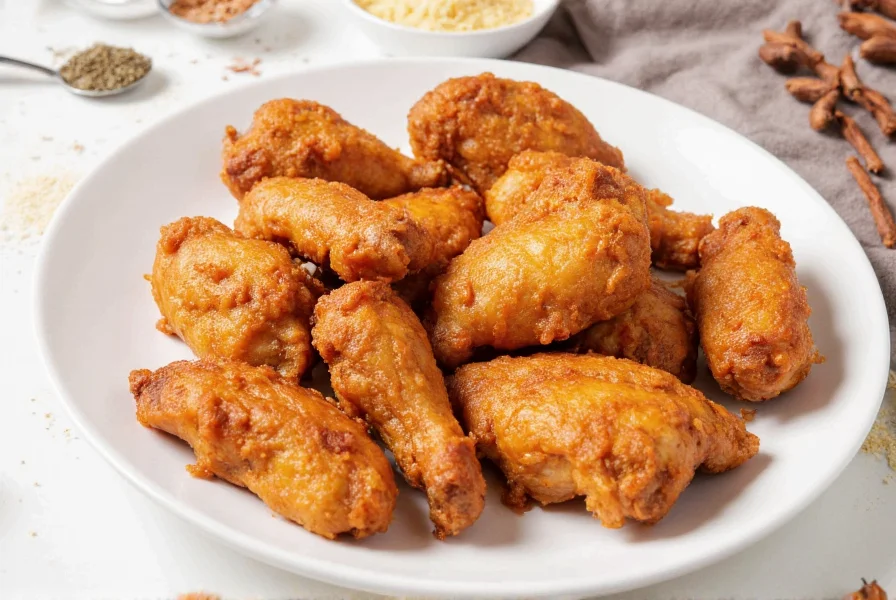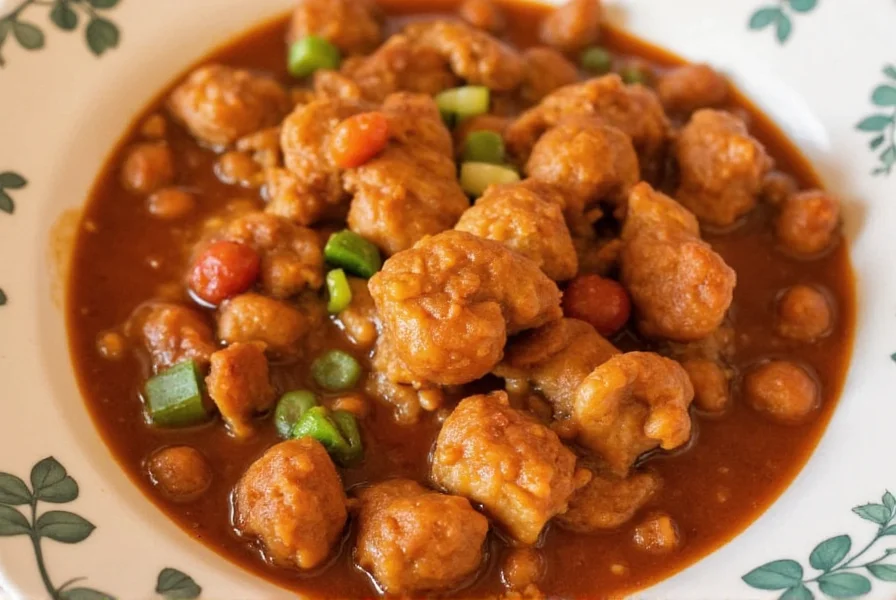Why This Chili Chicken Recipe Works
Chili chicken has become a beloved Indo-Chinese fusion dish worldwide, but many home cooks struggle to replicate the perfect balance of flavors found in restaurant versions. This recipe delivers authentic taste through carefully calibrated ingredients and technique. Unlike simplified versions that rely on bottled sauces, our approach builds complex flavors from fresh components while maintaining the signature crispy texture that defines exceptional chili chicken.
Essential Ingredients Explained
The magic of chili chicken lies in its sauce composition and chicken preparation. Each ingredient serves a specific purpose in creating the dish's distinctive profile.
| Ingredient | Quantity | Why It Matters |
|---|---|---|
| Boneless chicken thighs | 500g | Thighs stay juicier during frying compared to breasts |
| Cornstarch | 3 tbsp | Creates the signature crispy exterior without heavy batter |
| Fresh green chilies | 4-5 | Provides authentic heat that bottled sauces can't replicate |
| Fresh ginger | 1 inch | Essential for authentic Indo-Chinese flavor base |
| Soy sauce | 2 tbsp | Provides umami depth without overpowering |
| White vinegar | 1 tbsp | Adds necessary tang that balances sweetness |
Step-by-Step Cooking Instructions
Preparing the Chicken
Cut 500g boneless chicken into 1-inch cubes. In a bowl, combine with 1 tablespoon ginger-garlic paste, 1 teaspoon soy sauce, 1 egg white, and 3 tablespoons cornstarch. Mix thoroughly until chicken is evenly coated. Let marinate for 20 minutes at room temperature. This simple marinade creates the foundation for authentic homemade chili chicken that rivals restaurant quality.

Frying Technique for Perfect Crispness
Heat vegetable oil to 350°F (175°C) in a deep pan. Fry marinated chicken in batches until golden brown and crispy, about 3-4 minutes per batch. Don't overcrowd the pan, as this lowers oil temperature and creates soggy chicken. Remove with a slotted spoon and drain on paper towels. Proper frying technique is crucial for achieving that perfect restaurant-style chili chicken texture.
Creating the Signature Sauce
For the sauce that makes this easy chili chicken recipe stand out, heat 2 tablespoons oil in a wok. Add 6 chopped garlic cloves, 4-5 slit green chilies, and 1-inch ginger (julienned). Sauté until fragrant but not browned. Add 2 tablespoons soy sauce, 1 tablespoon vinegar, 1 tablespoon sugar, 2 tablespoons ketchup, and ¼ cup water. Bring to a simmer, then add the fried chicken. Toss to coat evenly for 2 minutes until sauce clings to the chicken.
Pro Tips for Authentic Results
- Oil temperature matters: Maintain 350°F for crispy results—use a thermometer for accuracy
- Don't skip the egg white: It creates a light, crispy coating without heaviness
- Fresh chilies over dried: Green chilies provide the bright heat essential to authentic chili chicken
- Sauce consistency: Should coat the back of a spoon but not be gloppy—adjust water as needed
Common Mistakes to Avoid
Many home cooks make these errors when attempting this popular chili chicken recipe. Understanding these pitfalls ensures restaurant-quality results:
- Overcrowding the fryer: Causes oil temperature to drop, resulting in greasy chicken
- Burning aromatics: Garlic and ginger should be fragrant, not browned or bitter
- Using ketchup substitutes: Traditional tomato ketchup provides the right sweet-tangy balance
- Adding sauce too early: Toss chicken in sauce only at the end to maintain crispness
Variations for Different Preferences
This versatile recipe adapts well to various tastes while maintaining its authentic essence:
- Dry version: Omit water and reduce sauce ingredients by half for a drier, more intense flavor
- Vegetarian option: Substitute chicken with paneer or cauliflower for chili paneer or gobi
- Extra spicy: Add ½ teaspoon red chili flakes with the aromatics for additional heat
- Sweet & sour twist: Increase sugar to 2 tablespoons and add 1 tablespoon pineapple juice

Serving and Storage Recommendations
Serve immediately with steamed jasmine rice or hakka noodles for the complete experience. The dish is best enjoyed fresh, as the chicken loses crispness when stored. If you must store leftovers, place in an airtight container in the refrigerator for up to 2 days. Reheat in a skillet over medium heat rather than microwaving to restore some crispness. This quick chili chicken dinner recipe makes excellent meal prep when components are stored separately—keep sauce and chicken separate until ready to combine.
Frequently Asked Questions
Can I bake instead of fry the chicken for a healthier version?
Yes, but results will differ significantly. For baked chili chicken, coat chicken in cornstarch mixture, spray lightly with oil, and bake at 400°F (200°C) for 15-18 minutes until cooked through. The texture won't be as crispy as deep-fried, but you can achieve decent results by broiling for the last 2 minutes. The authentic restaurant-style texture requires frying, but baking works as a compromise for healthier homemade chili chicken.
Why does my chili chicken sauce turn out too watery?
A watery sauce typically happens when you add too much liquid or don't reduce it sufficiently. For the perfect sauce consistency in your chili chicken recipe, use exactly ¼ cup water and simmer until the sauce thickens enough to coat the chicken. If it's still too thin, mix 1 teaspoon cornstarch with 1 tablespoon cold water and stir into the simmering sauce. Remember that the sauce will continue thickening slightly as it cools.
How can I make my chili chicken less spicy without losing flavor?
To create a milder version of this popular chili chicken recipe while maintaining flavor, reduce the number of green chilies to 1-2 and remove seeds. Increase the sugar slightly (by ½ teaspoon) to balance flavors. You can also add 1 tablespoon of tomato paste for depth without heat. The key is maintaining the sweet-sour-spicy balance—don't eliminate all heat, as that's essential to authentic chili chicken, but adjust to your preference.
What's the difference between chili chicken and sweet and sour chicken?
While both are popular Indo-Chinese dishes, authentic chili chicken features a sauce with prominent garlic, ginger, and green chili flavors with moderate sweetness. Sweet and sour chicken has a more pronounced sweet-tart profile with higher sugar and vinegar content, often with bell peppers and pineapple. Chili chicken maintains some crispness in the chicken, while sweet and sour chicken typically has a thicker, glossier coating. Understanding this distinction helps when preparing either easy chili chicken recipe or sweet and sour variations.











 浙公网安备
33010002000092号
浙公网安备
33010002000092号 浙B2-20120091-4
浙B2-20120091-4